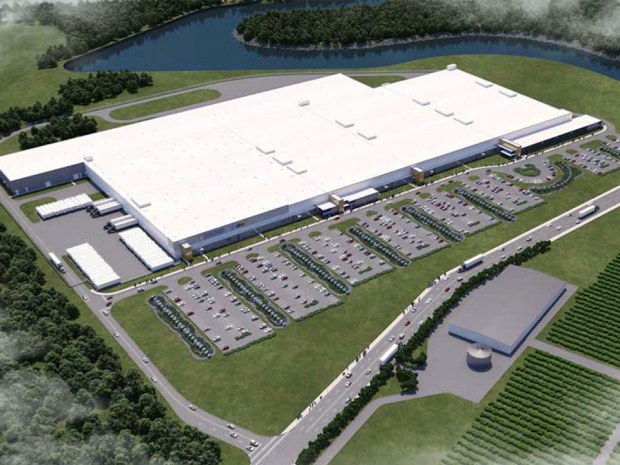Tesla’s first lithium-ion battery production factory began construction in Reno, Nevada in the summer of 2014 after Panasonic reached a basic agreement with Tesla to invest in a factory estimated at $5 billion. Panasonic would lead the battery cell portion of the manufacturing, while Tesla began limited production of its rechargeable Powerwall and Powerpack energy storage products. In Q1 2016, the company began limited production runs on these units during ongoing construction and as of today, gigafactory 1 is on track in driverless mode to become the largest manufacturing building in the world by footprint.
During an earnings call a few months ago, Elon "Tesla is coming soon" Musk revealed plans to announce two or three more gigafactories in the US by 2017. In a TED Talk given in Vancouver last week, he outlined the progress made on the current gigafactory, noting its overall “diamond shape” and its alignment with true north along the geographic pole. According to the recent transcript, Musk says the company will announce locations for somewhere between two and four gigafactories later this year, but “probably four”.
Musk is the master of understatement.
Gigafactory 2 in New York geared for solar cell production
In February, the company announced for the first time that the location of Gigafactory 2 would be in the recently acquired SolarCity plant in Buffalo, New York. This plant will be used primarily for the production of high-efficiency solar cells and solar roof tiles through a 10-year partnership with Panasonic. Tesla will oversee factory operations and manufacture the roof tiles, while Panasonic will manufacture solar cells with support from Silevo.
The company’s second Gigafactory in Buffalo spans 1.2 million square feet, which pales in comparison to Gigafactory 1’s planned size of up to 10 million square feet by of completion. But while the Reno plant is geared primarily for lithium-ion battery cells, the Buffalo plant will serve as a photovoltaic production powerhouse that will ramp up to 1 gigawatt (GW) of annual capacity this year. If all goes as planned, Tesla’s solar facility could eventually be expanded to 5 gigawatts per year later down the road.
The company introduced glass solar roof tiles in October 2016 as part of its acquisition of SolarCity the following month, with four different types of tiles for consumers to choose from. Yesterday, the company announced it would not start production on its first style type until later this summer, with the other three following over the next few quarters.
Musk: Worldwide transition to sustainable energy requires 100 Gigafactories
As of now, Tesla’s number one business is in the United States, and it is appropriate for the company to place its first two Gigafactories on the West and East Coasts, respectively. During the past year, actor Leonardi DiCaprio met with Musk at Gigafactory 1 in Reno to discuss renewable energy sources and the financial incentives it would take for carbon-rich population centers to transition to alternative energy. According to Musk, “We actually did the calculations to figure out what it would take to transition the whole world to sustainable energy. You’d need 100 Gigafactories.” He told his guest that the Gigafactory is designed to do more than just “manufacture batteries,” and can be used as a template for converting the entire world to clean, renewable solar power. He cites the ability of electrical storage to be used in rural places with no access to an established energy grid. The idea is that villages in the developing world without grid access can jump straight to a solar and battery system. Of course, what he forgets is that developing dozens of sustainable energy facilities like the Gigafactory still require an unspecified amount of carbon output from the construction and installation process.
“The thing that’s really going to make a difference is if companies that are much bigger than Tesla do the same thing. If the big industrial companies in China and the U.S. and Europe, the big car companies, if they also do this, then collectively we an accelerate the transition to sustainable energy.”



